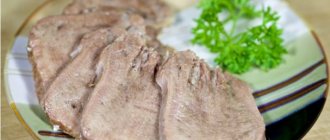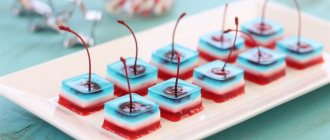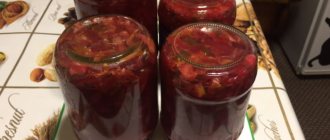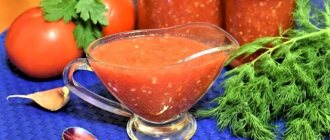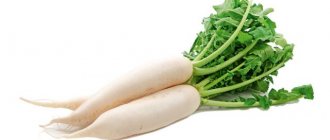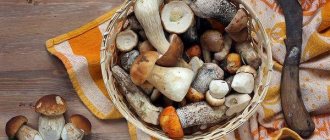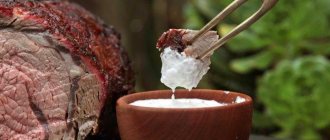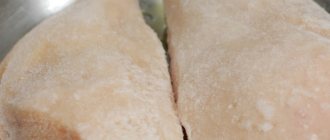Holidays fill our lives with fun, taking us out of the drab everyday life, and as usual, any banquet ends with serving a sweet table. Choosing a dessert for a celebration becomes a difficult task for the cook, and a great idea would be nothing more than making gelatin jelly with your own hands. However, for the delicacy to turn out tasty and beautiful, you need to master all the secrets and rules that are hidden under the apparent simplicity of this masterpiece.
Like almost all popular desserts today, jelly came to us from the center of world cooking - France, where the word gelee, meaning gel, meant the gelatinous fruit mass familiar to us.
Over the rather long period of existence of this delicacy, its recipe has not undergone any fundamental changes. And today, jelly can be made in the same way as at the beginning of its “career” from fruit juice, sugar and gelatin.
Despite the established methods of creating the dessert beloved by many, confectionery skills are still amazing in their skill, and modern sweet jellies are no longer prepared only from aromatic fruits, but also from various drinks, cream, milk, sour cream, chocolate, coffee and even alcohol.
In addition, today a worthy replacement has been found for the main gelling component - gelatin - in the form of agar-agar and pectin. But what is the difference between these three main gelatinous ingredients? And also, what methods of making jelly are there? Why does this dessert often not freeze, and how to use this delicacy to decorate cakes? You can get comprehensive answers to these and many other questions in our post.
Question No. 1: what gelling agents can be used to make jelly?
Gelatin
The most popular and most sought after component in making jelly is the well-known gelatin. But what is this yellow, granular composition?
Gelatin is a product of processing animal flesh. To make it, bones and tendons undergo a long cooking process, after which the resulting broth goes through the stage of drying and grinding, resulting in the powder we are familiar with.
Gelatin is actively used in the preparation of confectionery and culinary products, such as aspic, mousse or jelly. It’s easy to work with, but the main rule is compliance with the proportions and all the requirements, which we’ll talk about later.
Agar-agar
However, not everyone is so keen on animal products. For example, this component is no longer suitable for preparing lean food, and here agar-agar comes to the rescue.
Vegetarians can breathe easy. This component is considered a gift of the seas, because it is extracted from brown and red algae. This component is an excellent energy supplier for our body due to its high content of polysaccharides.
Agar-agar is an excellent gelling agent that does not affect the original taste of the jelly at all and makes it strong.
However, before using agar, you should first check its properties, since the quality of this ingredient may vary from manufacturer to manufacturer.
Pectin
Along with seafood, there is another excellent plant element that can be used to create magnificent gelatinous desserts - pectin. It is extracted from fruits, which contain more than enough of this substance.
Have you ever noticed that, for example, red currant jam takes on the appearance of confiture, that is, it hardens, becomes very thick and can hold its shape. There is no fantasy here, it’s all about pectin, which these red berries are extremely rich in.
Today, pectin is available in two forms - liquid and powder. In large-scale production, pectin liquid is usually used, which is added to a hot broth, when, as at home, it is still better to resort to a dry product. It should be diluted with cold juice or puree.
This gelling component perfectly thickens the jelly and does not affect the taste, but in large quantities this ingredient can make the dessert cloudy, so be sure to follow the proportions.
The benefits and harms of jelly
Many lovers of this sweet delicacy will be pleased to know that it brings considerable benefits. Especially children and elderly people. After all, experienced housewives know how long it takes for jelly to harden, but not all of them know why. And all thanks to special basics, which we will look at a little later. They have a positive effect on bones and joints - the former become stronger, and the latter - more mobile. And for fractures, many doctors recommend adding jellied meat and jelly to your diet so that the bones heal faster.
If the jelly is made with natural juice or with the addition of fruit, it also acts as a source of vitamins, which is also quite useful.
Unfortunately, it can also cause harm, especially if consumed in excess. However, here one jelly is different from another. Homemade, prepared using the base, berries from the garden and homemade juice, brings only benefits. But store-bought sachets, advertised as quick-to-prepare jelly, often contain harmful substances. These can be various flavors, sweeteners and dyes. Some do not cause the slightest harm to human health. But others can lead to the development of allergic reactions. It is no coincidence that many dyes that are added to semi-finished products in our country are prohibited in other countries as dangerous or potentially dangerous. So it’s not in vain that many housewives prefer to spend their time and prepare a homemade, environmentally friendly product.
Question No. 2: how to dilute gelatin, pectin and agar-agar and make jelly from them
Very often, you can hear a lot of complaints from home cooks about unruly jelly, saying that it comes out in clumps, does not harden at all, or does so only partially. To avoid such incidents when working with this dessert, first of all, you should learn how to properly dilute gelling substances.
They all differ in their thickening properties, and therefore, first of all, you need to follow the instructions indicated on the packaging of the drug. Also, you should not use a product that has expired, since time has a detrimental effect on the gelling abilities of substances, and in this case you should not even dream of a successful delicacy.
Proportions for powdered gelatin
No matter how we are intimidated by the capriciousness of gelatin, they say, dissolve it in boiling water, do not boil it, and other, other horror stories, the technology for working with this substance is extremely simple:
- Proportions must be observed. For every 50 ml of water there should be 5 g of gelatin, which fits in 1 tsp;
- The substance must be dissolved with cooled boiled water and allowed to swell for 30-40 minutes;
- Next, the resulting mass should be heated in a water bath until the grains are completely dissolved. This procedure is called among housewives dissolving gelatin;
- If grains still remain in the liquid, then the solution must be filtered through a strainer;
- Then you can mix the sticky broth with the base (juice, compote, syrup, etc.) and pour into molds.
In general, the required amount of gelling agent is indicated for each recipe separately, because it takes into account not only the volume of the base, but also its composition, since gelatin works much worse in an acidic environment. However, based on standard standards, to obtain a more delicate and soft jelly you will need 20 g of gelatin per 1 liter of liquid, and for a stronger dessert - 50-60 g for the same volume of base.
Delicious recipe! How to Wear a Scarf with a Shirt
Working with sheet gelatin
If we use gelatin leaves in cooking, then the technique of working with them is somewhat different from their powder counterpart.
Firstly, the leaf should first be washed and then soaked for half an hour in cool water based on the proportions of 1 part of the substance to 10 parts of water. After this, drain the liquid, squeeze out the gelatin and add it to the boiling base (syrup, coffee, etc.). The plates will completely dissolve, and the result will be an excellent jelly.
Agar-agar proportions
For vegetarians, it will be useful to know that dealing with agar-agar is also not difficult. The entire process of soaking it is identical to working with gelatin plates.
However, we soak agar-agar for two hours, and you need to take half as much of it as gelatin.
How to dilute pectin
With pectin there are no worries at all. In liquid form, this component can be safely added to a hot base drink.
If we decide to choose a powder, then it should be diluted in juice or any other base liquid for jelly, based on proportions of 1:4, and after that the mass is brought to a boil and poured into molds.
Ready jelly in bags
Today, many manufacturers, in order to ease the work of confectioners, have begun to produce packaged semi-finished jelly in dry form.
This mixture is already enriched with aromatic and flavoring additives, and also anointed with dyes. Chemistry, and nothing more, but working with such a semi-finished product is a pleasure. In general, instructions on how to prepare jelly from a bag are available on each package, and it is better to follow these instructions.
Typically, the entire contents of the bag are filled with 400 ml of cold boiled water and left to swell for 40 minutes. After this, the saucepan with the resulting mass is placed on low heat and stirring constantly until the grains disappear.
Ideally, there should be no grains left in the solution and then it is ready for pouring into molds.
How to dilute gelatin for jellied meat and jelly, in what proportions
The most delicate dessert made from cottage cheese or sour cream, thick cream from cream, homemade marshmallows and many other delicious products cannot be prepared if you do not know how to properly dilute gelatin.
In order for jellied meat and jelly to obtain the required consistency, you need to add a thickener, observing the proportions of liquid and gelling powder.
You just have to figure out how to dissolve gelatin, and there will be no more difficulties with preparing aspic.
Benefits and types of gelatin
Gelatin is not only a thickening agent, it is also a very useful protein supplement. The substance is an animal protein - collagen. The dry powder contains about 87% proteins.
Collagen is responsible for the beauty and elasticity of the skin, so for women it is especially necessary both in cosmetics and food products. It is useful to take collagen internally for those who have problems with cartilage tissue and joints.
Gelatin is sold in three types:
- Powder (small granules). Their advantage is that recently more and more manufacturers have been producing instant thickeners that do not require soaking. But you have to constantly convert grams into spoons and back.
- Plates. This gelatin is stronger and requires slightly less than powder. The sheet thickener must be kept in water to swell.
- Ready-made mixtures for dishes. In addition to a thickener, jelly bags contain salt, spices and often a flavor enhancer, but the meat or fish will still have to be cooked. Jelly kits allow you to prepare desserts with the most exotic flavors, but the composition contains flavors and dyes.
It is best to prepare dishes with gelatin at home with your own hands. Both tastier and healthier.
Proportions
To ensure that the product has the correct consistency, it is best to strictly adhere to the recipe. If there are no instructions on the package or exact dosage in the recipe, you should adhere to the following proportions:
- For regular jelly or aspic, you need to take 25-30 g of gelatin powder per 1 liter of liquid . 30 g is 2 tablespoons with a small “slide”. If the jellied meat is fatty (from pork) and the jelly contains a lot of sugar, then it is better to slightly increase the dosage of the thickener. These proportions are suitable for jellied tongue, fish, chicken jellied meat or boneless meat.
- If thick jelly is required, especially for decorating cakes and desserts, then the amount of thickener must be increased to 40-50 g per liter.
If you're interested, my recipe for making jellied meat in a bottle is here. I prepared it for New Year 2021, and all the guests liked the shape of the pig.
Collagen is obtained from cartilage, bones, tendons by boiling them. Therefore, when preparing jellied meat, you can do without gelatin at all, but then you need to cook it from meat with the addition of pork legs or chicken feet. You will have to simmer the raw meat over low heat for at least 3-4 hours, then the collagen will go into the broth.
- 5 g of gelatin is 1 teaspoon of powder;
- 15 g – 1 tablespoon;
- 20 g – 1 tablespoon plus 1 teaspoon.
It is also worth paying attention to the manufacturer's recommendations on the bags. They are very different. For example, Dr. Oetker 6 sheets of gelatin weigh 10 g, they are designed for 500 ml of liquid. On instant gelatin labels, most manufacturers recommend using 10 g of powder per 1-1.5 cups (200-300 ml) of hot liquid.
If you use gelatin in sheets, you need the same quantity as powdered gelatin.
The “enemies” of gelatin are the following fresh fruits: kiwi, pineapple, figs. They contain specific enzymes that destroy collagen. Before using these fruits for jelly, you need to boil them or take them in canned form.
Sequence (how to add)
- To swell the gelatin, pour 1 part of the powder into 10 parts of broth or decoction, pour any amount of water over the sheets. The liquid should be at room temperature, not hot.
- After 15 minutes, squeeze the leaves a little and mix with a small amount of broth or sweet decoction. Mix the granules well with the liquid in which they swelled.
- Now we need to start gelatin. To do this, heat the mixture in a water bath to about 60 degrees. This is called dissolving gelatin.
- Pour a portion of the dissolved gelatin into the hot jelly broth or broth, be sure to strain so that lumps do not get into the dish and spoil it.
- After adding the thickener, the liquid must not be boiled. Pour into molds, cool to room temperature, and put in the refrigerator.
If the bag says “instant,” then the powder does not need to be pre-soaked in cold water. It's the easiest to work with. While the jellied meat or fish aspic is being cooked, it is enough to take a small portion of the hot liquid and dilute the gelatin in it.
Then pour in the gelling solution at the end of cooking.
How long does jellied meat with gelatin take to harden?
Gelatin begins to “work” (stabilize) at a temperature of +15 º C and below. That is, the entire contents of the dish must cool. The cooling time depends on what kind of broth the meat was poured into, hot or at room temperature. The pole needs to take into account the thickness of the layer. On average, jellied meat freezes in 5-6 hours.
The jellied meat does not freeze, what should I do?
This often happens when you prepare jellied chicken or aspic from tongue or fish. If the cold food has not frozen after 4 hours in the refrigerator, you can “reanimate” it.
- Melt the jellied meat and measure the volume.
- Calculate the required amount of thickener, soak it, and let it swell.
- Bring the broth to a boil (do not boil), add the gelling solution. Pour into molds and cool.
To be on the safe side, you can check the “strength” of the jellied meat by first placing a tablespoon of it in the refrigerator. After 20 minutes it should turn into a gel. The second way to check is to soak your fingers in warm (not hot!) broth. They should become sticky, sticking together a little when touched.
Agar - an alternative to gelatin
Vegetarians can replace gelatin with a plant-based thickener - agar, extracted from seaweed. It is also sold in supermarkets. If gelatin dissolves in hot water, then agar only dissolves in boiling water. He needs liquid with a temperature of 90-100 degrees.
To prepare jelly or aspic, pour boiling water over agar-agar powder and leave for 15 minutes to swell. Then add to the main volume of broth or syrup, bring to a boil and boil for 2-5 minutes. Since agar is a stronger thickener, its consumption is 5 g per 500 ml of liquid (10 g per 1 liter).
Jellied meat, fish jellied fish or multi-colored jelly - all these dishes prepared at home will be beneficial. The correct dosage of gelatin provides them with an attractive appearance and dense consistency.
Source: https://recept-menu.ru/kak-razvodit-zhelatin-dlya-xolodca-i-zhele/
Question #3: How to cover a cake with jelly
Oh, how ladies these days love to make their own cakes, decorating them with all possible decorative options. And how can we do without jelly, which is so often poured into fruit and berry still lifes, and even cream paintings.
In general, for these purposes, today all kinds of dry mixtures are produced in bags, which need to be mixed with water or juice, heated until the grains are completely dissolved and poured over the biscuit-cream giant with the resulting solution.
However, this is not without its subtleties and tricks. Oh, this sweet jelly, I wish I could put a spoke in his wheels.
Before pouring jelly on top of the cake, you need to soberly assess the situation. If at the top of your culinary masterpiece there is a creamy landscape, then you certainly cannot approach this confectionery product with a hot jelly broth, otherwise all the beauty will melt and spread. Here you need to act on a whim, namely:
- First of all, we need to make the sides so that the jelly does not spread beyond the borders of the cake. The barrier can be the same cream, meringue or springform cake pan, which will need to be secured so that its upper edges rise slightly above the cake.
- In general, you should not apply the gelatinous solution directly to the sponge cake, otherwise the porous cake will happily absorb the liquid, leaving no chance for the jelly to harden;
- Ideally, it is desirable that the top of the cake is covered with cream, soufflé, fruit, jam and other lubricants, and the dessert itself sits for some time in the refrigerator, and only then you first need to apply the thinnest layer of jelly, send the cake back to the refrigerator so that the solution sets and hardens . And after that you can pour in the remaining jelly mass.
That, in principle, is all science is. The beauty is indescribable, and there are no particular difficulties.
Question No. 5: How long does it take for jelly to harden in the refrigerator?
This is perhaps one of the most exciting questions among fruit jellied spellers. Indeed, how long can you wait until the dessert finally trembles on the plate, delighting everyone with its brightness and taste.
Here the answer is not clear, because everything depends primarily on the quality of the gelling substance, as well as on its concentration. On average, the optimal thickening time is considered to be 1-2 hours; in the case of sour cream or cream dessert, the time increases by 1 hour.
However, time is only one factor in this step of making jelly. Temperature plays an important role in this whole epic. The most comfortable conditions for a successfully prepared delicacy are considered to be cold ranging from +1 to +4 o C.
However, if you are short on time, you can put the filled molds in the freezer for literally 10 minutes so that the solution cools down faster, but under no circumstances should you allow the liquid to freeze, otherwise, when served, your dessert will “cry” before it even gets to the table.
This happens because frozen water crystals have a destructive effect on the peptide network that holds the liquid in a jelly state.
As soon as the solution has cooled in the freezer, move the cups to the refrigerator, and then your delicacy will be ready in half an hour.
Question No. 6: the jelly is not frozen, what should I do?
And now the long-awaited hour or two has passed, and you enthusiastically look into the refrigerator to enjoy the sight of a beautiful and appetizing dessert, and then with a shudder you discover that the liquid remains liquid and does not even think of solidifying. Here you can shout, cry, break dishes, but this will not bring any benefit in this situation. Let's figure out why the jelly doesn't harden.
The very first possible omission may be exceeding the amount of base fluid. Also, jelly can behave this way if the gelling substance was of poor quality, expired, or less of it was added than required by the recipe.
The solution to the problem in both cases is the same. After transferring all the failed desserts into a saucepan and heating them again, add another portion of swollen gelatin, agar-agar and pectin to them, and after that you need to pour the solution into molds again and cool.
But besides this, there are other reasons for unsuccessful jelly. For example, fruits such as papaya, pineapple, kiwi and mango, as well as alcohol and an overly acidic environment, are the very stumbling blocks that most negatively affect the quality of dessert.
This is explained by the fact that all these products contain enzymes that dissolve protein, which, in essence, are gelling substances.
In this situation, we can do the following: increase the amount of gelatin (pectin, agar-agar) in the recipe and pour boiling water over the recalcitrant fruits. Then the jelly will shine in the spotlight like the king of a festive feast.
Delicious recipe! How to make raisin buns
Question No. 7: what kind of dishes and molds are used for jelly?
As we have already noticed, in order for the gelatinous delicacy to turn out successful, you need to take into account many factors and nuances regarding products and heat treatment. But who would have thought that dishes are not the least important here.
One of the main requirements when preparing jelly is not to use aluminum cookware for preparing the solution. If you neglect this rule, the sweet jellied meat risks darkening and acquiring an unpleasant aftertaste. In general, we take anything, but not aluminum saucepans.
The second equally important aspect is the molds, or rather their temperature! Yes, you heard right, it’s the temperature, because pouring warm jelly juice into cups with a cold bottom, as a result, you can get a dessert that is far from appetizing with a crumpled top after placing it on a dish.
To avoid such “shame”, you need to first dip the molds in hot water, then everything will go smoothly and without unpleasant surprises.
Jelly is best prepared in glass glasses, bowls, and glasses. Also, special shaped molds are often used for these products. It is better to immediately abandon metal cups and give preference to plastic, or even better, silicone dishes.
As an original move, cooks often resort to using natural bowls made from fruit peels. This is how you can make a vessel from an orange, lemon, or grapefruit by removing the pulp from it. Whole eggshells or molds for boiling eggs are also used.
Today, the assortment of original shapes literally eclipses the eye and mind, and it will not be difficult for you to choose something to suit your own taste.
Question No. 8: how to get jelly out of the mold
In general, in most cases, jelly is prepared in containers in which they are intended to be served later and from which this unearthly delicacy is supposed to be eaten. However, if you decide to pour the gelatinous fruit mass into a cake pan, be it silicone or made of another material, the question arises of how to get the jelly out of the “shell” without damaging its integrity and external superiority.
Everything is very simple, before you start the extraction process, you should immerse the bottom and sides of the container in hot water for 1 minute, and then the sweet jellied meat, having slightly thawed, will slip out of the embrace of the mold without harm to its own beauty.
By placing the colorful dessert on a serving plate, you can decorate it with whipped cream, fresh fruit or a mint leaf and serve.
Light and colorful, tender and tasty, appetizing and spectacular, these desserts will be a wonderful decoration for any banquet. Why come up with something unimaginable, when it’s easier to make jelly from gelatin with your own hands, impressing all the guests with your talent as an excellent confectioner.
Sexy jelly for February 14, dessert for Valentine's Day
Preparing jelly at home is very simple, and serving this dessert beautifully is already aerobatics. Our chef offers a simple recipe for agar jelly and an original presentation.
Many people, not only children, but also adults, love jelly. This delicious fruit or milk dessert is served cold. But not everyone is able to prepare it, since virtually no one knows the exact time frame for how long the jelly should sit in the refrigerator before it hardens. Further in the article, the dessert's hardening time will be indicated depending on the thickener used and its shelf life.
Which fruits to choose?
Some housewives, deciding to surprise their loved ones, decorate the delicacy with a variety of fruits, including exotic ones. Of course, they are surprised and even upset when the jelly did not harden overnight, remaining liquid. But they know exactly how long it takes for the jelly to harden in the refrigerator, and they can’t be wrong!
Have you found yourself in this situation? Remember – didn’t you add kiwi to the jelly? This is a serious mistake. Substances contained in fruits prevent thickening. Therefore, you should not use them - it is better to give preference to ordinary apples, bananas, oranges or any berries.
Jelly Bases
To prepare jelly, you first need to choose a base or thickener. There are currently three common variants of this component:
Each of these foundations has its own characteristics. Thus, gelatin is a substance that is obtained from tendons, bones, cartilage and animal skins and is rarely included in the menu of vegetarians. But, this component not only helps the jelly harden - you can also use it to prepare many other dishes:
Gelatin is one of the most common thickeners, so it is available in all supermarkets and grocery stores.
Attention! Often, when using gelatin to make jelly, the final dessert at room temperature quickly loses its elasticity and becomes more liquid.
Agar-agar is an option more suitable for people who choose vegetarianism. This thickener is obtained by processing certain algae. This base is more expensive than gelatin, although it has a number of advantages over it:
- no smell;
- has no taste;
- withstands heat - the consistency of the dessert does not change.
Pectin is the rarest and most expensive thickener for jelly. It is completely of plant origin, just like agar-agar, but it is not obtained from algae, but from some vegetables and fruits:
As is the case with agar-agar, desserts and other dishes prepared using it have no foreign flavors and are not afraid of heat.
Depending on the chosen thickener base, the estimated hardening time of the jelly differs. On average, the product hardens in the refrigerator in a couple of hours - provided that the recipe is followed exactly, regardless of whether the dessert is homemade or from a bag.
Drying time
The process of preparing jelly, blancmange and other similar desserts and dishes involves cooling and solidifying them. In general, the exact thickening time depends on the volume of base used - agar-agar, gelatin or pectin. Sometimes 40 minutes to one or two hours is enough for the dessert to stop being liquid and acquire a jelly consistency.
Advice! The best option is to leave the dessert to harden in the refrigerator overnight. If the proportions and recipe are followed, this time will definitely be enough to thicken the jelly.
How quickly does it freeze?
It is very important to know how long the jelly hardens in the refrigerator so as not to make mistakes when preparing it.
In general it depends on the concentration of the thickener. But usually properly prepared jelly hardens in 40-60 minutes. However, it is better to make it in advance and leave it in the refrigerator overnight. Then it will definitely set, and you will serve a beautiful and tasty delicacy to the table that will delight everyone who enjoys it.
But you shouldn’t put it in the freezer. Frozen jelly is unlikely to please guests. Well, except for those who like jelly-flavored popsicles.
Is it possible to put jelly in the freezer?
You should not put jelly in the freezer, as there is a high probability of getting jelly-like ice cream and not the desired dessert. Nevertheless, it is possible to maintain the correct structure of the dessert rather than ending up with something frozen, but it will require much more effort. If the jelly manages to become covered with an ice crust or freezes in the freezer, all efforts will be pointless - the dessert will be watery, and its taste will disappear after “thawing”.
If you untimely remove semi-hardened jelly from the freezer and place it in the refrigerator due to temperature changes, the thickening process will not only not speed up, but will also slow down. During the hardening process, it is better not to stir fruit, butter jelly, blancmange, cake with a jelly layer or cold milk-based dessert at all. The hardening process will go faster if the dessert remains at rest.
Delicious recipe! Crumble cake recipe with photo
If you need to make the jelly harden faster, then it is better to lower the temperature in the entire refrigerator using the regulator - this will prevent the cold dessert from freezing and preserve all the taste of the dish.
About the women's site Dear Ya
This resource was created for girls and women. Here you will find interesting and informative articles on various topics. Each publication contains photo and video materials.
The women's site "Dear Me" is a portal consisting of such popular sections as: news, horoscope, dream book, tests, beauty, health, love and relationships, children, nutrition, fashion, handicrafts and others.
Our women's portal brings to visitors optimism and beauty that can please the tastes of any woman. Culinary recipes will make you not let go of your man and maintain a good, bright relationship.
Women's magazine, online publication “Dear Me” is updated daily with relevant articles on various topics. With us you can learn about many diseases and traditional medicines that can cure them. All kinds of recipes for masks that can maintain youth for a long time.
Many adults and children love jelly. This is a truly tasty and unusual delicacy, which, if prepared correctly, can not only please gourmets, but also bring certain benefits. Let's take a closer look at this delicacy - the method of preparation, the pros and cons, how long the jelly hardens, and other subtleties.
How does jelly from a bag harden?
Making jelly from juice at home does not always have the energy and time - it’s easier to prepare a dessert from a bag, where the components are already mixed in the form of a powder in the required proportions and you just need to add the required volume of water. In fact, all grocery stores and supermarkets supply jelly that does not require long preparation.
Powder is a ready-made mixture that contains the required amount of gelatin, as well as flavoring and aromatic additives. The negative aspects of such a product include the dyes present in the powder.
The instructions on the bag usually indicate how long the powder, diluted with water, needs to stand in the refrigerator. You need to follow the recipe exactly, because if you add too much water, the jelly may not harden. The dessert needs to sit in the refrigerator until it hardens; the exact time is determined as follows:
- At medium temperatures, it takes one and a half to two hours for the dessert to acquire the desired consistency.
- If the equipment is set to full power - 40-60 minutes.
- When the regulator is twisted to a minimum - 4-8 hours.
Attention! With the power regulator on the refrigerator in the middle position, the gelatin completely hardens in 5 hours. If the dessert is still liquid after 4 hours, then you should not hope for a miracle and expect that it will harden completely after 1 hour.
How long does jellied meat take to harden without gelatin?
In practice, there are quite a lot of reasons why, instead of elastic jelly, plates may end up with an appetizing, but still not solidified broth. Let's group them together before we start figuring out how to avoid curing problems.
- Composition of jellied meat, including additions of vegetables and decorative elements.
- Cooking temperature and duration.
- The ratio of liquid and other products.
Before finding out how long it takes for jellied meat to freeze, you should definitely understand how the duration of this process is related to the above conditions.
It is generally accepted that the more by-products are used when cooking jellied meat, the faster and more reliably it solidifies. This is due to the fact that the sticky substance is boiled down from the bones, veins, cartilage, and skin. Accordingly, the more you use them, the higher the likelihood of the jellied meat freezing.
It is clear that if you prepare a dish from only offal, you will get a rather dubious taste. Meat must be added to jellied meat; it is only important to take into account the proportions. It is generally accepted that for every kilogram of meat you should put up to two kilos of bones and cartilage.
How long does it take for jellied meat to freeze if the specified proportions are followed?
From 5 hours if you cooked it from beef or pork, to 8 hours if you used mainly poultry meat.
If you boiled vegetables, often used to decorate a dish, along with meat, then the freezing time may increase by about a third. If after this time the jelly has not formed, you will have to add gelatin to the broth.
We will tell you a little further how long jellied meat with gelatin hardens, but it is not one of the ingredients of jellied meat. But herbs and salt increase the time for hardening, but the ingredient beloved by many - garlic - on the contrary, reduces it.
The recommended cooking time for jellied meat is:
- 8 hours for beef jellied meat;
- 6 hours for pork, beef, goat broth;
- 3–5 for jelly from poultry and small animals: rabbits, nutria.
Cooking temperature is equally important. It is customary to cook jellied meat at a minimum boil, in order to avoid adding water. On the other hand, the duration can be significantly reduced if you use a pressure cooker. Water under pressure boils at a higher temperature, which means food cooks faster and more reliably.
The ratio of liquid to other ingredients when placing them in a pan should be approximately 1.7:1, but you need to add more water if it covers the meat by less than 2-3 centimeters.
Freezing jelly
When preparing cold desserts, gelatin or agar-agar are often used, but pectin is the best option when making homemade jelly. This is due to the fact that when using gelatin it is difficult to add the required amount - do not pour too much and do not put too little. In the first option, the dessert will acquire a too rubbery consistency, and in the second it will be watery. In the case of agar-agar, the dessert turns out to be too fragile - its structure is easily damaged. Pectin is the best option due to its high gelling ability, which is not lost when the dessert is heated. Because of this, it is better to prepare jelly with pectin for freezing.
In order for freezing jelly to be successful, you need to choose the right container, which must have the following characteristics:
- Tightness - so that no ice crust appears on the surface and the dish is not spoiled.
- Low sides and a wide base - a large area of the dish and a small volume of the workpiece accelerate the thickening process.
- Glass, plastic or silicone - there will be no foreign odors or tastes in the frozen sweet dish.
To prevent the possibility that the jelly will “float” when serving, it must be moved from the freezer to the refrigerator compartment for 2 hours. And then dip the form in which the dessert was frozen into boiling water for 1-2 seconds and immediately turn it over onto the prepared plate.
How long does jelly last?
It is not recommended to store sweet cold dishes in the freezer for more than 1 month. After defrosting, the jelly is edible for only 36 hours. The duration of storage depends on what recipe the dessert was prepared from and what ingredients it was used in:
- Homemade fruit, cream and dairy products are edible for 12 hours.
- Store-bought from a bag, after adding water and completely hardening, it can be stored for 96 hours.
- Canned jelly, purchased ready-made, is good for 14 days if the packaging remains sealed (the exact dates are indicated on the packaging by the manufacturer).
Homemade jelly is the most delicious, but it requires attention; to make it correctly you need some experience. In this case, you can use not gelatin, but agar-agar or pectin, which are tasteless and odorless, and also do not “thaw” at room temperature. With store-bought (from bags) it is much easier - you only need to add the correct volume of water and leave it in the refrigerator to harden for a couple of hours.
Sources:
Video: how to make jelly
How to make jelly?
Now let's briefly talk about the preparation process and how long it takes for jelly from gelatin or other thickeners to harden.
First of all, you need to choose a suitable base and fill it with water so that it swells and softens. It is very important to maintain the proportion of water and thickener. Otherwise, you can get too hard jelly, more like old marmalade, or, conversely, liquid water that does not want to harden in the refrigerator.
While the base is preparing, decide what other products you will use. The choice is quite large. You can take any juice, dilute jam in water, or even just use sweet water - the most budget option. For beauty and sophistication, you can add chopped fruit.
Place the prepared base on the fire and bring to a boil. Stir constantly until the gelatin or pectin dissolves without residue. Then pour in the juice or fruit drink in a thin stream and immediately remove from the heat. Let cool slightly and pour into glasses or any other molds. You can add pieces of fruit to them, as mentioned above.
If you are expecting guests or just want to pamper your loved ones with not only tasty, but also beautiful jelly, try using different juices or berries. This is a little more complicated - you will have to pour the jelly into the mold several times, cool it in the refrigerator until it hardens, and then pour the second layer. Different colors and aromas will pleasantly surprise even the most demanding critic.
